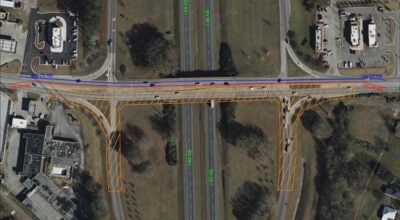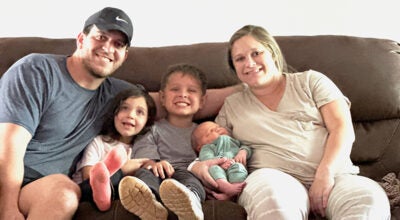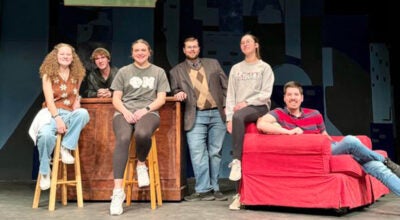Sparks talks forensic science
Published 9:00 am Friday, March 2, 2018
LANETT — Mike Sparks, Republican Party candidate for the District 13 seat in the Alabama Senate, was the guest speaker at Thursday’s noon hour meeting of the West Point Rotary Club, held inside the Hampton Inn’s River Room.
Sparks is one of three GOP hopefuls vying for the party nomination in the June 6 primary. The other candidates are Randy Price and Tim Sprayberry. The winner will face Democrat Darrell Turner in November. Turner is unopposed in the Democratic primary.
Sparks talked about his 39-year career with the Alabama Department of Forensic Sciences. He was with the Birmingham area office for 25 years and headed the department until his retirement this past December.
The field of forensic science has gotten lots of exposure on TV in recent years. What actually takes place, he said, isn’t as glamorous as it’s made out to be.
“We don’t ride around in Hummers or in helicopters, and as far as I know, there’s no kissing going on in the labs,” he joked.
The TV exposure has helped in getting young people to study it in college. There is now, Sparks said, some really top-notch professionals in the field, a large number of them being women.
Forensic science is one area where Alabama has been a pace setter. The state has had an independent Department of Forensic Sciences since 1935. In most states, the department is in a branch of law enforcement. In Georgia, for example, those who work in forensics are with the GBI.
Being an independent agency, said Sparks, really helps in court cases.
“A defense attorney can’t say, ‘You work for the ABI. You are with the prosecution.’ Thirty percent of the suspects we brought to court were cleared on DNA evidence, They may not have been nice guys – they may not have been on their way to communion – but they didn’t do what they were accused of.”
Sparks said that two famous court cases in the 1930s underscored the need for forensic science in the courtroom. These cases were the kidnapping of Charles Lindbergh’s son and the Scottsboro Boys case.
On March 1, 1932, Charles Lindbergh Jr., son of the famed aviator, was kidnapped from the family home in New Jersey. The only significant piece of evidence found at the scene was a homemade ladder. The unknown kidnapper sent a note demanding a $50,000 ransom, but only a few days after the child’s disappearance, the infant’s body was found in a wooded area only a few miles away from the Lindbergh home. The child’s death was attributed to a blow on the head, possibly from the child being accidentally dropped on its head during the kidnapping.
The ransom was paid in marked bills. Several months later, an alert bank teller spotted one of those bills being passed by a customer. She watched him drive off and wrote down his tag number on that bill.
This led police to the prime suspect, a German immigrant named Bruno Hauptmann.
Police went to Hauptmann’s home to question him and noticed something odd in the ceilings – places where planks of wood
had obviously been removed. Further investigation revealed that those pieces of wood were a perfect match for the wood in the homemade ladder. They also found close to $15,000 of the ransom money hidden in his garage. Hauptmann was found guilty in an open-and-shut case. He was executed in the electric chair in 1936.
The Scottsboro Boys case took place in the spring of 1931. Nine African-American teenaged boys were accused of raping two white women on a train. The 11 people in the incident were among a group of two dozen people hoboing a train from Chattanooga, Tenn. to Huntsville, Ala. About half of the riders were black and half white.
Two of the white hobos told the nine teenage blacks that they were on “a white man’s train” and would have to leave. When they refused, the white boys jumped off and sought out the police to tell them that they’d been minding their own business when some rowdy black boys made them jump off.
Hearing this, the sheriff of Jackson County, Ala. organized a posse and managed to stop the train in the small hamlet of Paint Rock, Ala. The black boys were arrested on assault charges. The incident became more complicated when two young white women who were on the train accused the black boys of raping them.
Even though no evidence was gathered to prove this, they were charged with it. One of them, 12-year-old Ray Wright, was convicted and sentenced to die, a common sentence in the Deep South at that time when a black male was accused of raping a white woman.
The Scottsboro Boys case is one of the more notorious miscarriages of justice to take place Alabama in the 20th century. All defendants were found guilty and were given sentences ranging from 75 years in prison to death. All but two served sentences, but all were released by 1946.
“These two cases showed that we needed scientific evidence,” Sparks said. “To its credit, the Alabama Legislature was an innovator on this.”
The Alabama Department of Forensic Sciences was established in 1935 and located on the campus of the Alabama Polytechnic Institute (now Auburn). Ironically, one of the first cases it was involved in involved cattle. A plaintiff accused an angry neighbor of poisoning his cows, resulting in a loss estimated at $2,500.
Sparks said that forensic science was an area where Alabama has always been at the forefront.
Alabama was one of the first states, for example, to use ballistic evidence. When a bullet is fired from a gun it leaves unique marks that can link that bullet to the gun it was fired from.
Toxicology has had an impact in court cases. Sparks said there was one case in the state where lab testing proved conclusively that a woman had killed her entire family by getting them to eat Hamburger Helper that had been poisoned.
“Alabama is Number One in getting cold hits in unsolved murder cases,” Sparks said.
Sparks said he had learned some truths in a long career in forensics. “Not all burglars are rapists, but most rapists started out as burglars.”
In his 25 years of going to crime scenes in the Birmingham area, he found that all of them included at least one of three factors: (1) alcohol, (2) drugs, (3) pornography.
“At least one of those three was at every scene I went to where someone had been killed,” he said. “The vast majority of people who are convicted of murder are truly sorry afterward. Something like alcohol, drugs or pornography took away their better judgment.”
Of the approximately 55,000 cases the Department of Forensic Sciences gets in a year, an estimated 30,000 of them are in some way related to illegal drugs.
Sparks said he liked the expression, “If you don’t want to fall down, don’t go where it is slippery.”
He said it’s amazing how many fires take place and how many of them are deliberately set. He said the just about every minute of every day, there’s a fire going on somewhere in Alabama. Most of them, of course, weren’t deliberate, but those that were intentional are almost always proven to be arson.
“It’s amazing how many times people think they can set something on fire with gasoline end not get caught. You will get caught every time doing that,” he said.
When Sparks retired in December, the Alabama Department of Forensic Sciences had 220 employees and a $28 million annual budget. The state’s DNA data bank is located in an 80,000-square-foot building in Hoover, Ala. Forensic labs are located at Alabama State University, AUM, Huntsville and Mobile. There are morgues in Mobile and at AUM.
Sparks said that DNA is a fascinating field.
“The male Y-chromosome is transferred from generation to generation,” he said.
What any man has, his father had the same one, his father did and so on.
“That’s how they were able to determine that Thomas Jefferson had children by Sally Hemmings,” he said.
One case that involved DNA evidence that was rather tricky involved a pair of identical twins. They are both in prison in Oklahoma when a case was linked to them.
“The DNA was spot on,” Sparks said. “But each one said, ‘I didn’t do it, my brother did.’”
Sparks said that his experience in state government would serve him well in the Senate. “I know how state government works, and I believe I can make it work better. Government should be smaller, more transparent and more accountable to the taxpayer. That’s why I am running for the state senate.”
Sparks said that Chambers County was fortunate to have an entity like the Chambers County Development Authority and
was especially fortunate to have someone like Valerie Gray as its executive director.
“She’s a jewel,” he said. “I wish we could have people like her all over the 13th District. Greg Canfield of the Alabama Department of Commerce is very impressed with her.”




